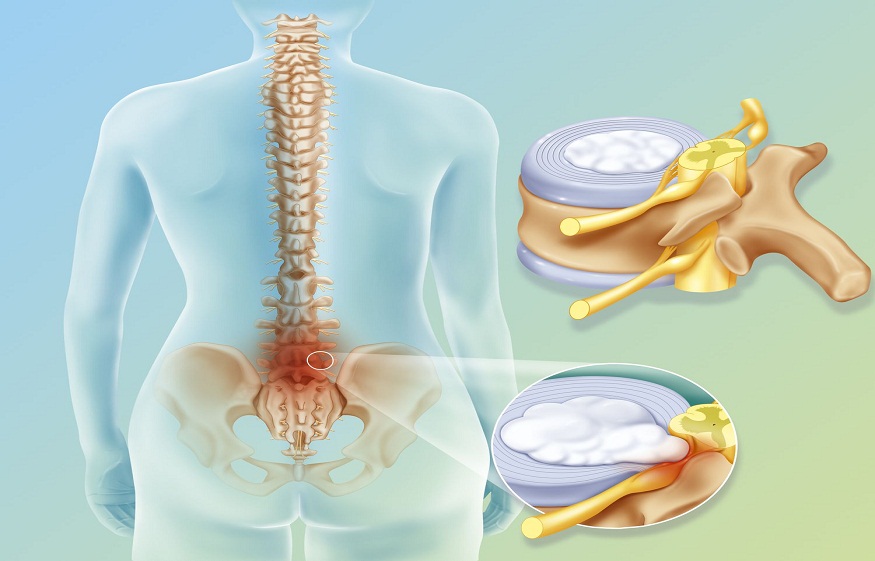
alternative to traditional artificial implants. Crafted from biological materials designed to replicate the structure and function of real spinal discs, these innovations aim to preserve spine mobility, minimize complications and provide a durable solution for degenerative disc disease. Dr. Larry Davidson, a pioneer in advanced spinal treatments, highlights the science behind bioengineered discs, their transformative potential in spinal surgery and their promise to revolutionize spinal care.
What Are Bioengineered Discs?
Bioengineered discs are created using Bioengineered discs represent a groundbreaking development in spinal surgery, offering a natural biological materials, such as natural polymers or stem cells, to mimic the structure and function of natural spinal discs. Unlike artificial discs made of metal and plastic, bioengineered discs are designed to integrate with the body’s tissues, promoting natural movement and reducing the likelihood of rejection or complications.
- Structure and Function of Bioengineered Discs: Bioengineered discs are composed of layers that replicate the annulus fibrosus (the tough outer ring) and nucleus pulposus (the gel-like core) of a real disc. This design aims to absorb shock and support multidirectional movement, like a healthy spinal disc.
- Materials and Methods Used: Common approaches include the use of stem cells, tissue scaffolding and hydrogels. These materials are biocompatible and can encourage the body to produce new cells, facilitating tissue repair and regeneration within the spine.
How Bioengineered Discs Differ from Traditional Artificial Discs
Traditional artificial discs are effective but often require complex materials to simulate movement and durability, which can sometimes lead to wear and inflammation. Bioengineered discs, on the other hand, are constructed from biological components designed to integrate seamlessly with spinal tissues.
- Biological Integration: Bioengineered discs support cell growth, allowing the body’s cells to populate the implant, resulting in a more natural interface. This may help reduce the risk of immune response or wear that can sometimes arise from synthetic materials.
- Natural Flexibility and Movement: Bioengineered discs aim to replicate the dynamic motion of a real disc more closely than artificial discs. This adaptability is intended to allow for smoother, multidirectional movement, potentially helping to maintain spinal function and alignment over time.
Potential Benefits of Bioengineered Discs for Patients
Enhanced Natural Movement and Comfort: Bioengineered discs provide movement and flexibility more akin to a healthy disc, allowing patients to retain natural spinal motion. This may help reduce stiffness, improve comfort and limit restrictions on daily activities.
Reduced Risk of Complications: Because bioengineered discs integrate with surrounding tissues, they carry a lower risk of inflammation and adjacent segment disease (ASD). This compatibility reduces the chances of stress on neighboring discs, potentially lowering the need for future surgeries.
Biological Self-Renewal and Longevity: Bioengineered discs, particularly those using regenerative cells, have the potential to repair themselves over time. This self-renewal quality has the potential to contribute to longer-lasting outcomes compared to synthetic implants, which may degrade or require replacement over time.
The Role of Regenerative Medicine in Bioengineered Discs
Regenerative medicine techniques, such as stem cell therapy and tissue engineering, play a crucial role in creating bioengineered discs. These approaches are designed to encourage natural tissue formation and repair within the disc structure, supporting more sustainable results.
- Stem Cell Therapy for Disc Regeneration: Stem cells can differentiate into various cell types, including those found in spinal discs. When integrated into a bioengineered disc, stem cells may help to support regeneration of the nucleus pulposus, potentially restoring the disc’s cushioning effect and shock absorption.
- Tissue Scaffolds for Structural Support: Tissue scaffolds provide a framework on which cells can grow, helping to restore the disc’s natural structure and function. These biodegradable scaffolds support new tissue growth, which eventually replaces the scaffold and creates a fully biological disc.
- Biologic Growth Factors: Growth factors, proteins that promote cell division and tissue repair, are often incorporated into bioengineered discs to encourage faster healing and integration. These biologics aid in strengthening the disc over time, enhancing its long-term performance.
Current Research and Development in Bioengineered Discs
The development of bioengineered discs is an active area of research, with clinical trials underway to assess their effectiveness and safety. Preliminary studies show promising results, suggesting that bioengineered discs may help restore motion and alleviate pain.
- Clinical Trials and Outcomes: Early trials of bioengineered discs are showing positive outcomes, with patients experiencing reduced pain and improved mobility. Researchers are studying the long-term viability of these discs, hoping to establish a reliable alternative to traditional implants.
- Advances in Biocompatible Materials: Research into new biomaterials is expanding the potential of bioengineered discs. Innovations in hydrogels and biopolymers allow for better mimicry of disc flexibility and strength, enhancing the implant’s ability to withstand spinal forces.
- Challenges and Limitations: Although promising, bioengineered discs face challenges such as ensuring consistency in regeneration, maintaining longevity and avoiding immune responses. Researchers are working to refine the technology to address these issues before bioengineered discs become widely available.
Future Potential and Patient Impact of Bioengineered Discs
Improved Quality of Life for Patients: Bioengineered discs’ ability to replicate natural movement and integrate with the body’s tissues could provide patients with a more comfortable and enduring solution for disc degeneration.
Potential for Lifetime Solution: Unlike synthetic implants that may need revision surgery, bioengineered discs could offer a lifetime solution by regenerating tissue and adapting to changes in the spine over time.
Broader Patient Applicability: Bioengineered discs could become a viable option for younger patients or those who want to avoid traditional implants, broadening the scope of treatment options in spinal care.
Reduced Healthcare Costs: The potential durability of bioengineered discs could reduce the need for follow-up surgeries, contributing to lower long-term healthcare costs for both patients and providers.Bioengineered discs hold promise for the future of spinal surgery, offering a potential natural alternative to synthetic implants that may support movement, reduce complications and provide long-term durability. Specialists like Dr. Larry Davidson realize that by leveraging regenerative medicine and advanced biomaterials, bioengineered discs could redefine treatment for degenerative disc disease.These advancements have the potential toprovide patients with a more holistic and effective solution for spinal health. As research and technology continue to advance, bioengineered discs may soon become a mainstream option, marking a new era in spinal surgery focused on restoring natural function and improving quality of life.
